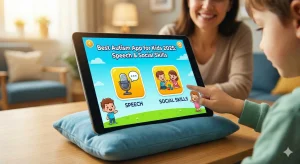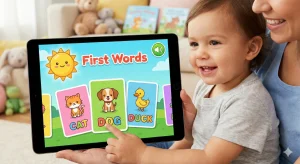Top 5 Parenting Tips to Prevent Still Face Syndrome
By Wellness Hub
Last Updated: October 8, 2024
As a parent, you’re constantly looking out for your child’s well-being, ensuring they grow up happy, healthy, and emotionally balanced. But have you ever heard of Still Face Syndrome? This term might not be familiar to many, yet understanding it is crucial for fostering your child’s emotional and social development.
What is Still Face Syndrome?
Imagine a moment when you’re fully engaged with your baby—smiling, cooing, and interacting. Your little one responds with excitement, giggles, and a burst of energy. Now, imagine suddenly putting on a neutral face, not showing any emotion or reaction. What happens next? That’s where Still Face Syndrome comes in.
Still Face Syndrome describes the negative response a baby has when their caregiver suddenly becomes unresponsive or emotionally neutral during an interaction. Babies are highly attuned to their parent’s facial expressions, voice tones, and gestures. When these cues are missing or suddenly withdrawn, babies may become distressed, anxious, or even withdrawn. This can make them feel emotionally disconnected, affecting their ability to bond and communicate effectively.
Also read: How Still Face Syndrome Affects Your Child’s Emotional Health
Why It’s Important to Prevent Still Face Syndrome
You might wonder, why is this a big deal? Well, it’s simple: the interactions you have with your child are foundational to their emotional and social development. Positive parenting techniques play a significant role in ensuring that your child feels secure, understood, and emotionally nurtured.
When a baby frequently experiences a “still face” or a lack of responsiveness from a caregiver, it can impact their emotional health. They may struggle to develop essential skills like social interaction, empathy, and emotional regulation. Consistent emotional engagement helps foster healthy parent-child interaction and can prevent the long-term effects of Still Face Syndrome.
Understanding Still Face Syndrome
So now that we’ve touched on what Still Face Syndrome is, let’s dig a little deeper into understanding what causes it and how you can identify it in your child. It’s important to know how your interactions shape your baby’s emotional growth and what signs you should look out for.
What Causes Still Face Syndrome?
At its core, Still Face Syndrome happens when a parent or caregiver is physically present but emotionally disconnected. Think about it this way: babies are like emotional sponges. They soak up every smile, every laugh, and every comforting tone you use. But when these positive interactions are interrupted—perhaps due to distraction, stress, or simply not engaging—babies are left in an emotional void.
Limited facial expressions, lack of eye contact, and minimal vocal tone can all make your baby feel as if they are not receiving the attention or engagement they crave. A lack of responsive play or emotional connection often leaves a baby feeling frustrated, confused, or insecure. Over time, this unresponsiveness can lead to emotional disconnect, where a child feels ignored and struggles to bond with their parent.
Also read: Identifying and Managing Still Face Syndrome in Children
Signs to Look Out For
The beauty of babies is that they are incredibly expressive. They let you know how they feel through sounds, facial expressions, and movements. Recognizing the signs of Still Face Syndrome early on can help you step in and provide the emotional support your baby needs.
Here are some signs to watch for:
- Mood Shifts: Notice if your baby seems to go from happy and engaged to suddenly distressed or withdrawn when you become less responsive.
- Stress Responses: Babies may show signs of stress when they don’t receive an emotional reaction. This could look like fussing, increased crying, or even a blank stare when they don’t know how to process the situation.
- Attempts to Regain Attention: A baby who senses emotional disconnect may try to win back your attention by reaching out, cooing louder, or making bigger movements. If these attempts are ignored, they may eventually stop trying, leading to a feeling of hopelessness or insecurity.
5 Parenting Tips to Prevent Still Face Syndrome
Now that we understand what Still Face Syndrome is and how it can affect your baby, let’s dive into some simple yet powerful ways you can prevent still face syndrome it. Here are 5 easy and practical tips to ensure your baby feels emotionally connected and supported.
1. Maintain Regular Eye Contact
- Why It Matters
Eye contact is one of the simplest and most effective ways to strengthen emotional bonding. When you make eye contact with your baby, you let them know that they are seen, loved, and important. Babies feel acknowledged through eye contact, which boosts their self-esteem and encourages healthy emotional development. - How to Do It
Make eye contact a regular part of your routine. While feeding, diaper-changing, or simply holding your baby, look directly into their eyes. During playtime, position yourself at their eye level, so they can see your face clearly. Even small moments of eye contact throughout the day can have a big impact on your baby’s emotional well-being.
2. Engage in Responsive Play
- Active Participation
Playtime is not just for fun; it’s an opportunity to connect emotionally with your baby. Engaging in responsive play, where you actively respond to your baby’s actions, sounds, and facial expressions, helps build a strong emotional bond and encourages their self-expression. - Examples of Activities
Simple games like peek-a-boo, mirroring your baby’s sounds and movements, and playing with soft toys together are great ways to interact. Encourage your baby to take turns in play. For example, if they make a sound, mimic it back to them. These small acts of responsive play make your baby feel understood and loved.
3. Use a Warm and Expressive Tone
- Voice as a Tool
Your voice is a powerful tool for communication and emotional connection. Babies are highly responsive to different tones and emotions. By using a warm, loving, and varied tone, you help your baby recognize and respond to emotional cues, fostering a sense of security and comfort. - Benefits of Positive Vocal Interaction
When you speak to your baby in a cheerful and gentle voice, you are not just comforting them; you are also helping them develop their language and social skills. Whether you’re reading a story, singing a song, or simply talking about your day, your expressive voice supports their emotional and language development.
4. Encourage Physical Touch and Cuddling
- The Power of Touch
Physical touch is essential for building trust and security in your baby. Gentle cuddling, skin-to-skin contact, and hugging not only provide comfort but also promote emotional bonding. Touch is one of the earliest senses babies develop, and it has a soothing effect on their emotions. - Creating Comfort and Connection
Incorporate touch in your daily routines. Try massaging your baby after a bath, cuddling before naps, or carrying them in a wrap or sling as you move around the house. These moments of closeness help your baby feel safe and loved, preventing emotional disconnect and enhancing your bond.
5. Respond Promptly to Emotional Cues
- Be Attuned to Your Child’s Needs
Babies communicate their feelings through facial expressions, sounds, and body language. Responding quickly and empathetically to their cues—whether they are smiling, laughing, crying, or showing signs of discomfort—is crucial in creating a sense of security and trust. - Building Trust and Security
When your baby sees that you are attentive and responsive to their emotions, it reinforces a strong emotional connection. This helps them feel confident to express their feelings, knowing they will be heard and comforted. Over time, this responsive caregiving prevents the risk of Still Face Syndrome and supports your child’s overall emotional well-being.
Also read: 5 Early Signs of Still Face Syndrome You Need to Know
The Importance of Positive Parenting Techniques
Parenting is more than just providing for a child’s physical needs; it’s about creating a nurturing environment where emotional growth can flourish. One of the most impactful ways you can support your child’s emotional development is through consistent emotional availability. Let’s explore how being emotionally present can shape your child’s well-being and build a solid parent-child bond.
Consistent Emotional Availability
Imagine your baby feeling a sense of comfort every time you smile, hold them, or respond to their cries. This emotional availability is what fosters a secure attachment between you and your child. When you consistently respond with warmth, eye contact, and gentle touch, your baby learns to trust you as their safe space. They start to feel valued, understood, and loved—key ingredients for healthy emotional development.
Being emotionally present doesn’t mean being perfect. It simply means making a conscious effort to engage, listen, and respond to your child’s emotional needs. Whether it’s playing together, having bedtime conversations, or just sitting together quietly, these moments of connection build a sense of security and trust.
Research shows that children who have secure attachments are more likely to develop strong emotional regulation, empathy, and social skills later in life. Your presence, attention, and genuine care set the foundation for how your child will relate to others and handle life’s challenges.
Promoting Healthy Development
The everyday interactions you have with your child—whether it’s a quick cuddle, a playful game, or even responding to their cries—play a big role in their overall development. Here’s how positive parenting can make a difference:
- Building Emotional Resilience: By being responsive and emotionally available, you teach your child how to manage and understand their feelings. When they see that you’re there to support them through both happy and challenging moments, they learn that their emotions are valid and manageable.
- Enhancing Social Skills: Babies who receive positive emotional responses are more likely to develop better social skills as they grow. They learn how to read social cues, express themselves, and form meaningful relationships with others.
- Supporting Overall Well-Being: The sense of security and trust that comes from positive parenting extends beyond childhood. These early experiences shape how a person views the world, builds self-esteem, and handles stressful situations throughout their life.
Positive vs. Unresponsive Parenting
| Positive Parenting Techniques | Unresponsive Parenting |
|---|---|
| Engages in Eye Contact Regularly: Parents make consistent eye contact during daily routines, play, and conversations, helping the child feel seen, acknowledged, and emotionally connected. | Limited or No Eye Contact: Minimal eye contact can lead to a lack of emotional bonding and a sense of disconnection for the baby, affecting trust and security. |
| Responsive to Baby’s Emotions: Actively responds to baby’s cues, whether they’re showing joy, distress, or curiosity. Promptly comforting a crying baby or mirroring their laughter builds emotional security. | Minimal Response to Emotions: When parents don’t respond to a baby’s emotional expressions, it can leave the child feeling unheard and unsupported, leading to emotional distress and withdrawal. |
| Uses Warm, Varied Tones: The parent uses a cheerful, loving voice that varies in tone to reflect different emotions, helping the baby to develop language skills and understand different feelings. | Neutral or Monotone Voice: Speaking in a flat, neutral tone without emotional variation can hinder the baby’s ability to recognize and learn emotional expressions, affecting their language and social skills. |
| Encourages Play and Communication: Engages in back-and-forth play, such as peek-a-boo or talking, that encourages active participation and stimulates emotional expression and development in the child. | Lack of Interactive Play: Absence of playful engagement means fewer opportunities for emotional bonding, communication, and developmental play, potentially leading to social and emotional delays in the child. |
| Provides Physical Touch and Comfort: Regular physical contact through cuddling, hugging, and gentle touch promotes a feeling of security, physical comfort, and emotional bonding. | Limited Physical Touch: A lack of comforting touch or physical closeness can make a baby feel emotionally neglected, reducing their sense of safety and trust in their caregiver. |
Conclusion
As parents, we all want what’s best for our children—to help them grow, learn, and feel secure. One way to support this is prevent Still Face Syndrome. By staying engaged, responsive, and emotionally available, you build a loving and secure bond with your baby. Simple actions like regular eye contact, warm smiles, playful interactions, and cuddles create a foundation of trust and help your child feel loved and safe. These small moments go a long way in supporting their emotional and social development.
Remember, parenting isn’t about being perfect—it’s about being present. Take time to cherish the everyday interactions that make your child feel valued. Respond to their little cues, play together, and be mindful of your emotional connection. If you want more tips on parenting and wellness, the Wellness Hub has plenty of resources to support you on your parenting journey. Every bit of attention and affection makes a big difference in your child’s life.
Frequently Asked Questions:
1. What is Still Face Syndrome and How Can It Affect My Baby?
Still Face Syndrome occurs when a parent or caregiver suddenly becomes emotionally unresponsive or neutral during interactions with their baby. This can cause distress and anxiety in babies, affecting their emotional development and bonding experience.
2. How Can I Prevent Still Face Syndrome in My Child?
Preventing Still Face Syndrome is simple. Focus on regular eye contact, engage in playful interactions, respond to your baby’s emotional cues, use a warm and expressive tone, and maintain consistent physical touch like cuddling and hugging.
3. Why is Eye Contact Important in Preventing Still Face Syndrome?
Eye contact helps your baby feel seen, loved, and secure. It builds an emotional connection and boosts their self-esteem. Regular eye contact during daily routines helps strengthen the parent-child bond and supports emotional development.
4. How Does Responsive Play Help My Baby’s Emotional Growth?
Responsive play, such as playing peek-a-boo or mirroring your baby’s movements, encourages back-and-forth communication. This active participation helps your baby feel understood and supported, fostering healthy emotional expression and reducing the risk of Still Face Syndrome.
5. What Are the Signs of Still Face Syndrome in Babies?
Signs to look out for include sudden mood shifts, such as your baby becoming distressed or withdrawn when you stop engaging with them. Your baby may also try to regain your attention through louder cooing, reaching out, or fussing.
6. Can Talking to My Baby in Different Tones Really Make a Difference?
Absolutely! Babies are highly sensitive to voice tones and expressions. Using a warm and varied tone helps them recognize emotions and feel secure, while also supporting their social and language development.
7. How Does Physical Touch, Like Cuddling, Help Prevent Still Face Syndrome?
Physical touch is key for building trust and security in your baby. Gentle cuddling, hugging, and skin-to-skin contact provide comfort and connection, making your baby feel safe and emotionally nurtured.
8. What Should I Do If My Baby Shows Signs of Still Face Syndrome?
If you notice signs like distress or emotional withdrawal, try to re-engage your baby with eye contact, playful gestures, or comforting touch. Being consistently present and responsive can help your baby feel secure again.
9. How Can Positive Parenting Techniques Impact My Child’s Overall Development?
Positive parenting techniques, such as emotional availability and responsiveness, build a secure attachment. This not only helps prevent Still Face Syndrome but also supports your child’s emotional resilience, social skills, and self-esteem.
10. Where Can I Find More Resources on Parenting and Emotional Wellness?
For more tips, advice, and resources on parenting and emotional wellness, visit the Wellness Hub. You’ll find a variety of helpful articles and practical guidance to support you and your child’s healthy development.
About the Author:
Shravanaveena Gajula
M.Sc ., Speech and Language Pathology (9+ years of experience)
Shravanaveena Gajula is a dedicated Audiologist and Speech-Language Pathologist with a BASLP and an M.Sc in Speech and Language Pathology. With experience spanning multiple settings, including Wellness Hub and Ashray Akruti, Veena specializes in a wide range of disorders from developmental issues in children to speech and language assessments in adults. Her expertise includes parent counseling, managing speech sound and fluency disorders, and creating individualized therapy programs. Veena is also PROMPT certified and an author of several insightful blogs on speech and language pathology, aiming to educate and assist caregivers in supporting their loved ones.
Book your Free Consultation Today
Parent/Caregiver Info:
Client’s Details:
* Error Message








